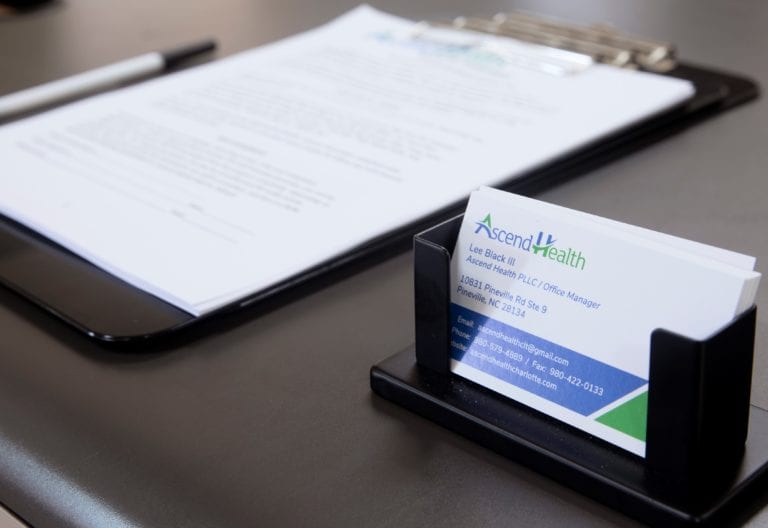Relapse prevention MAT treatment offers a structured approach to long-term recovery. If you have completed detox or inpatient rehab, continuing medication assisted treatment as part of your aftercare can help manage cravings, reduce relapse risk, and support your journey toward lasting wellness. At Ascend Health, our outpatient programs, including a comprehensive aftercare suboxone treatment program, are designed to guide you through every step of the opioid recovery continuum.
By combining FDA approved medications like buprenorphine and methadone with counseling, peer support, and harm reduction tools, you create a safety net against potential setbacks. In this article, you will learn how relapse prevention MAT works, compare your medication options, and discover strategies for building a robust aftercare plan tailored to your needs.
Understand relapse prevention MAT
What is relapse prevention MAT?
Medication assisted treatment (MAT) for relapse prevention uses FDA approved medications in combination with counseling and behavioral therapies. The goal is to normalize brain chemistry, block the euphoric effects of opioids, and relieve physiological cravings. When you engage in an outpatient buprenorphine treatment program, for example, you receive a regulated dose of buprenorphine or Suboxone, which reduces withdrawal symptoms and lowers the risk of returning to illicit opioids.
How MAT prevents relapse?
MAT addresses both biological and psychological aspects of opioid use disorder. Biologically, medications like methadone and buprenorphine bind to opioid receptors and prevent withdrawal and cravings. Psychologically, paired counseling sessions help you identify triggers, build coping skills, and develop healthy routines. Together, these elements form a comprehensive defense against relapse.
Evidence supporting MAT effectiveness
Medication assisted treatments combined with counseling and behavioral therapies help sustain recovery, prevent opioid overdose, and reduce the risk of contracting HIV or hepatitis C [1]. Research also demonstrates clear benefits of MAT on overdose prevention: a review of over 900 opioid-related deaths found that methadone reduced fatal overdose risk by 38% and buprenorphine by 34% compared to no treatment [2]. Long-term retention rates for MAT range from 49% to 70%, significantly higher than abstinence-only approaches at 5% to 15%. Globally, programs reported a 54.3% average retention at 12 months [3].
Review MAT medication options
Buprenorphine medications
Buprenorphine is a partial opioid agonist that eases withdrawal symptoms and reduces the risk of overdose. It is often combined with naloxone (as in Suboxone) to deter misuse. You may enroll in a suboxone maintenance therapy outpatient program or a suboxone clinic for long-term recovery depending on your needs.
Methadone features
Methadone is a long-acting full opioid agonist administered through specialized clinics. It requires daily or frequent dosing under supervision but offers a stable effect that prevents withdrawal and blocks opioid euphoria. If you prefer a structured environment and closer monitoring, methadone may be the right choice.
Naltrexone formulations
Naltrexone is an opioid antagonist that blocks opioid receptors. Available in oral or extended-release injectable forms, naltrexone requires you to be opioid-free for 7 to 14 days before initiation. The monthly injectable option, such as Vivitrol, can improve adherence and reduce relapse risk.
Comparing Suboxone and Sublocade
| Medication | Form | Dosing frequency | Key benefit |
|---|---|---|---|
| Suboxone | Sublingual film | Daily | Combines buprenorphine with naloxone |
| Sublocade | Monthly injection | Monthly | Simplifies dosing, lowers diversion |
Both Suboxone and Sublocade offer high efficacy in maintaining stable opioid receptor activity. Your choice depends on lifestyle preferences, risk profile, and insurance coverage [4].
Incorporate counseling and therapy
Individual therapy benefits
One-on-one counseling sessions allow you to explore personal triggers, co-occurring mental health conditions, and underlying trauma. Techniques like cognitive behavioral therapy (CBT) equip you with strategies to challenge negative thought patterns and develop resilience [5].
Group therapy sessions
Sharing experiences with peers fosters accountability and mutual support. In a group setting, you can practice social skills, receive feedback, and reinforce healthy behaviors. Many outpatient programs include regular group meetings as part of your suboxone outpatient recovery program.
Family involvement in aftercare
Family therapy brings loved ones into your recovery process, educating them about opioid use disorder and relapse prevention. This collaborative approach strengthens your support network and helps family members respond effectively to setbacks.
Telehealth therapy services
Telehealth platforms offer flexibility for counseling and group therapy, making it easier to stay engaged in treatment despite work or travel commitments. You can access individual or group sessions through a telehealth relapse prevention mat or telehealth suboxone maintenance program.
Build your aftercare plan
Develop personalized relapse strategy
Work with your care team to draft a relapse prevention plan that outlines warning signs, coping strategies, and emergency contacts. A collaborative comprehensive case plan (CC Case Plan) is recommended by the CSG Justice Center for individuals transitioning from controlled settings, ensuring you have a clear roadmap for potential challenges [6].
Assemble your support network
Your support network may include sponsors, sober friends, family members, and professional counselors. Regular check-ins and peer mentoring create accountability and emotional backing when you face high-risk situations.
Role of peer support
Peer support specialists share lived experience and can guide you through early recovery phases. Many MAT programs integrate peer mentoring to enhance engagement.
Family therapy options
Involving family members in therapy sessions fosters understanding and rebuilds trust. It also equips them to assist with crisis planning and relapse prevention.
Include harm reduction tools
- Provide naloxone kits and overdose education to friends and family [7].
- Offer fentanyl and xylazine test strips to detect adulterants in substances.
- Teach safe use practices and encourage use of syringe services programs when needed.
Plan for medication adherence
Consistent dosing is vital for MAT effectiveness. Set reminders, coordinate pharmacy refills, and explore long-acting formulations like Sublocade to reduce missed doses.
Track your recovery progress
Key metrics to monitor
- Urine drug screens and medication levels
- Appointment attendance and therapy engagement
- Self-reported cravings and mood
- Quality of life indicators such as sleep, employment, and relationships
Adjusting your treatment plan
Regular reviews with your provider allow for dosage adjustments, therapy modifications, or introduction of new supports. If you face barriers like transportation or work conflicts, consider a telehealth opioid treatment with suboxone option.
Choose your outpatient provider
Evaluating program features
Look for programs offering:
- FDA approved MAT medications
- Integrated counseling and peer support
- Flexible scheduling and telehealth options
- Specialized tracks such as a dual diagnosis mat program or a veteran opioid treatment program
Insurance and funding options
Verify that your provider accepts your insurance or Medicaid. Ascend Health delivers an insurance covered outpatient recovery program and works with major carriers to make MAT accessible.
Telehealth vs in-person care
Weigh the convenience of telehealth against the accountability of face-to-face visits. A blended model can provide both flexibility and structure.
Interview potential providers
Ask about:
- Staff credentials and experience
- Aftercare services, including outpatient mat with family therapy
- Policies for handling missed appointments and nonadherence
- Success metrics and patient testimonials
Relapse prevention MAT treatment is a comprehensive approach that blends medication, therapy, and ongoing support to safeguard your recovery. By understanding your medication choices, engaging in counseling, and building a tailored aftercare plan, you strengthen the foundation for lasting wellness.
If you are ready to take the next step, explore Ascend Health’s seamless continuum of care. From the outpatient opioid rehab with suboxone to a fully covered MAT aftercare program, our team is here to help you maintain progress, manage triggers, and thrive in recovery. Let us support you on your path to sustained health and hope.



